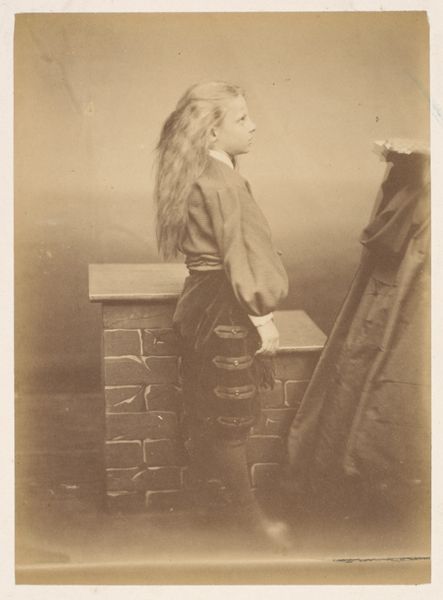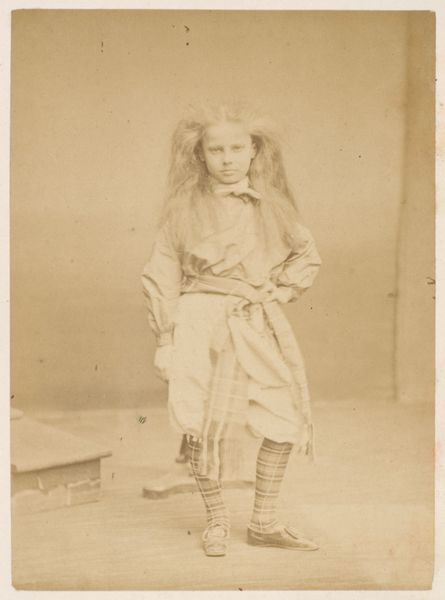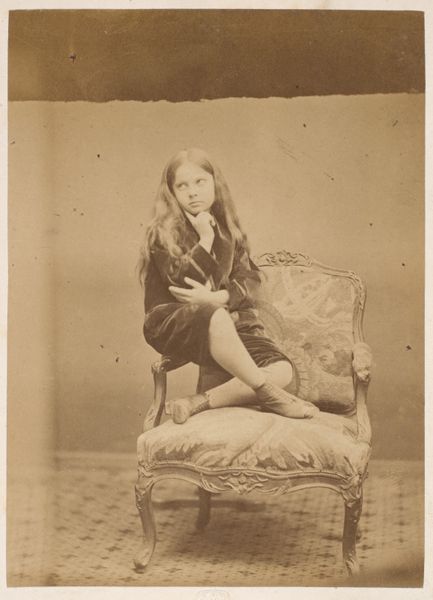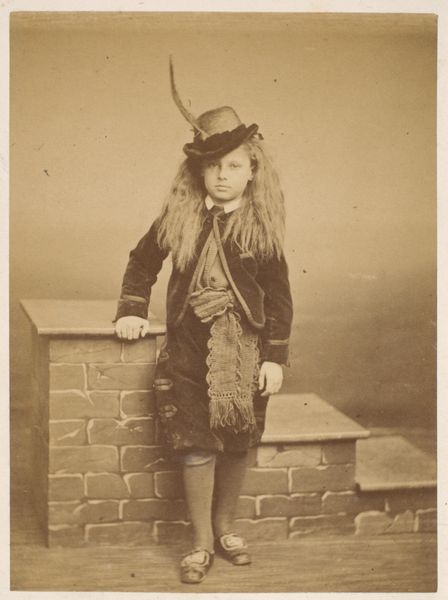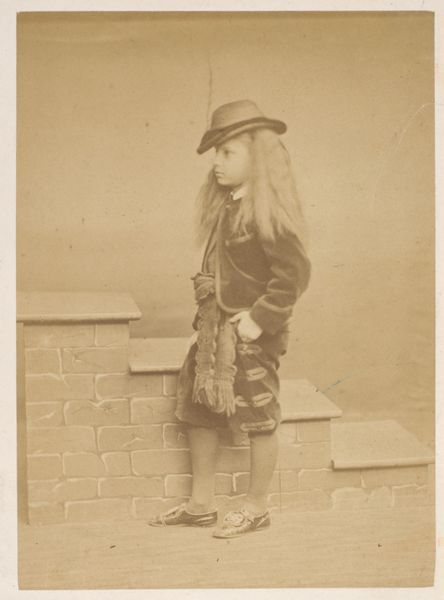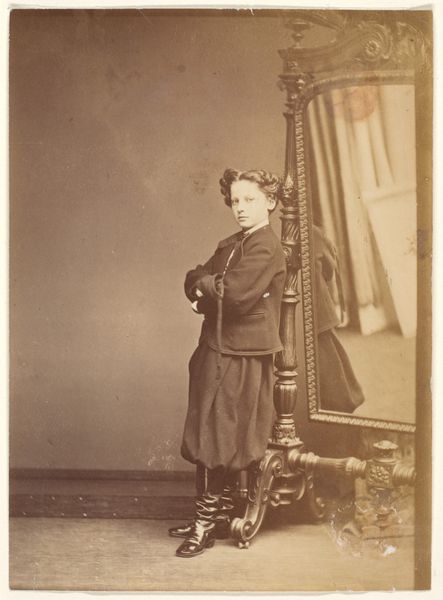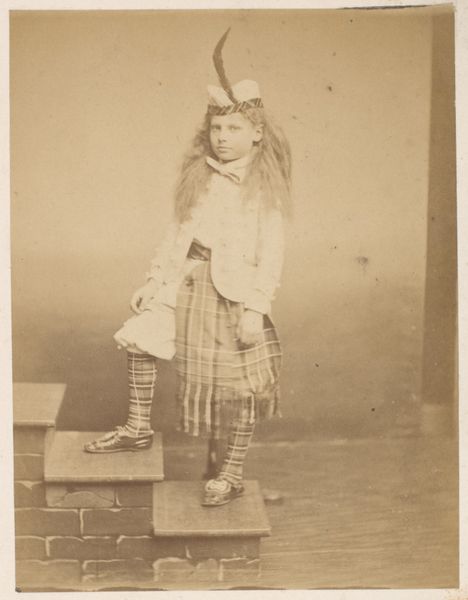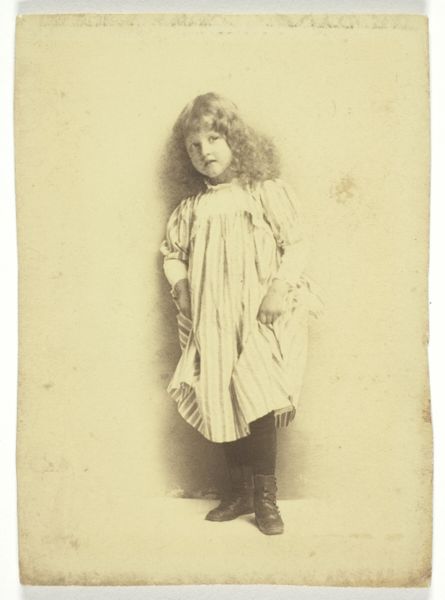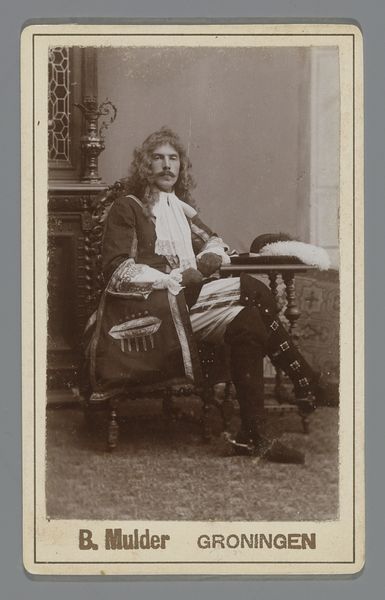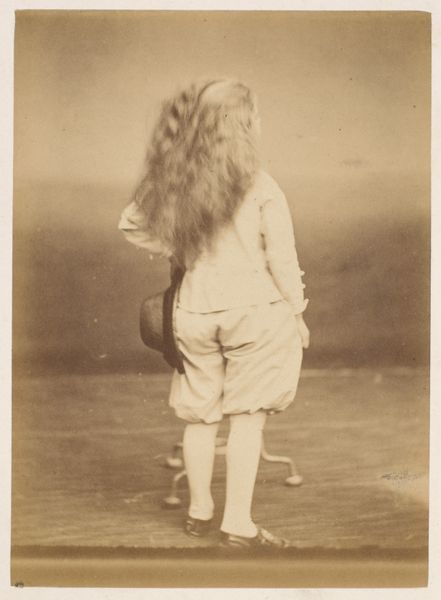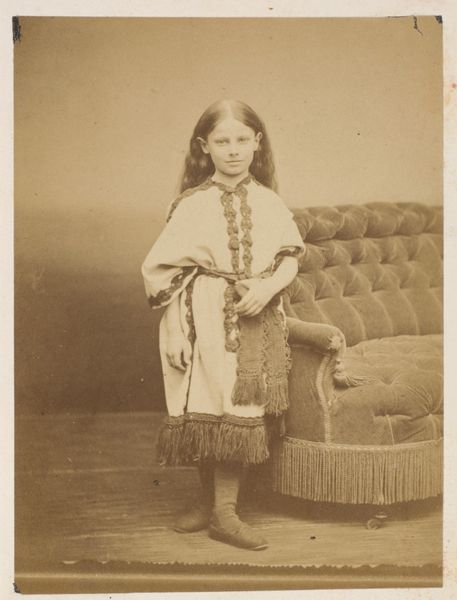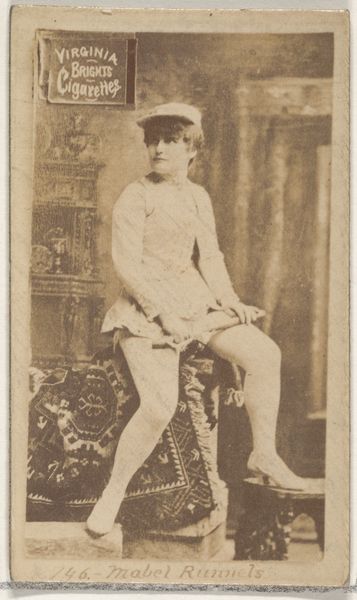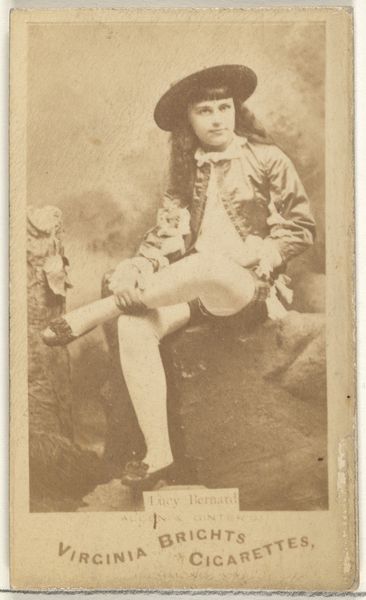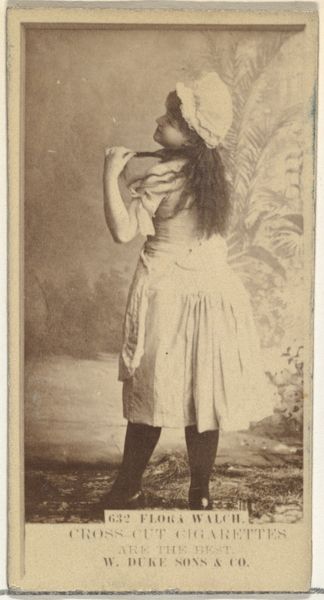
Dimensions: 8.6 x 12.1 cm (3 3/8 x 4 3/4 in.)
Copyright: Public Domain
Curator: It's dreamlike, isn’t it? This ethereal child perched on a stone, gazing into something only they can see... It pulls at the heartstrings, makes me wonder what stories swirl inside. Editor: This is a daguerreotype entitled "Le montagnard" ("The Mountain Boy"). The French photographer Pierre-Louis Pierson captured it sometime in the 1860s. The print hangs now at the Metropolitan Museum of Art here in New York. What does the artwork reveal about societal views on gender and class at the time? Curator: Well, the romantic styling – the flowing hair, the tunic-like garb – certainly leans into a softened, almost androgynous portrayal. But class is trickier. That carefully placed hat, those velvet-esque details…suggest not a *real* mountain boy, but a styled representation. A shepherdess in a painting. A fantasy, you might say. Editor: Absolutely. Consider that the daguerreotype process was still relatively new then and expensive. Pierson, with access to this technology, was able to use visual shorthand to position the sitter in conversation with Romantic ideals and pastoral fantasies. However, "peasant" was, and is, still an identity wrapped up in politics and labor. What kind of labor are we actually representing, or obscuring, when we aestheticize a rural person in this way? Curator: You know, looking again, I'm struck by the deliberate choice to have this mountain boy – this fantasy figure – perched on what looks suspiciously like steps in a studio. That little hint of artifice cracks open the whole romantic facade. Like a stage set, perhaps? Is Pierson poking fun at the whole idea, gently reminding us not to take these idealized images at face value? Editor: Or perhaps underscoring a growing Parisian fascination with the “natural,” “authentic” folk? These desires have long been loaded with implications, given they occurred in an era marked by burgeoning imperialism and social inequality. In many respects, “authenticity” has always been carefully performed. Curator: A performance for the lens, indeed. All that gold-toned detail, every nuance rendered...I can see Pierson obsessing, arranging… And now I’m the one fantasizing! Still, for all its possible critiques, I can't shake the genuine sense of yearning that resonates. Editor: A potent reminder that images, like identities, are layered and contested. Pierson gives us space to imagine, to desire—but, more importantly, space to question what and who is included and excluded within such a construction of the “mountain boy.”
Comments
No comments
Be the first to comment and join the conversation on the ultimate creative platform.
